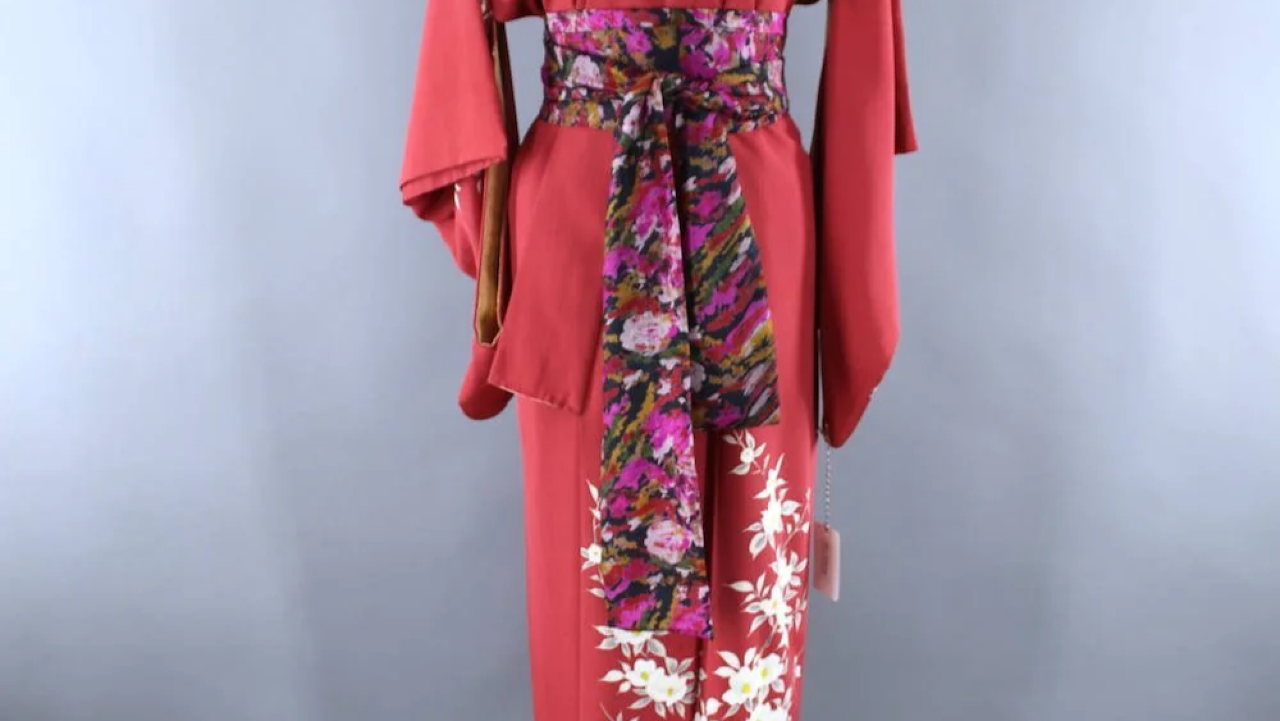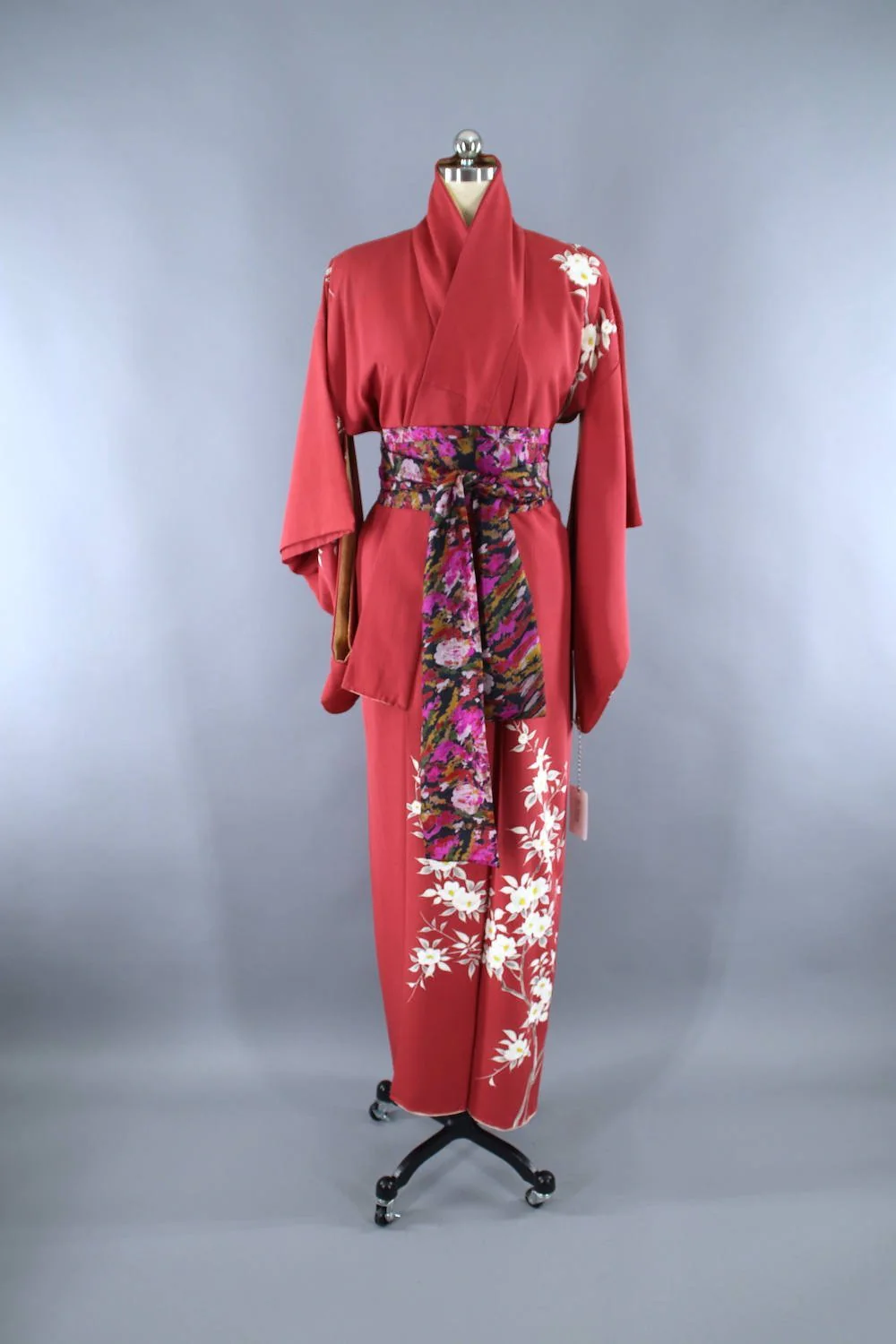AllVintageStyles
The Vintage Fashion Encyclopedia
Kimono Robe


A vintage kimono robe is a loose-fitting silk wrap garment with wide sleeves that became popular Western loungewear from the 1920s-1970s, representing cultural exchange and the adoption of Japanese aesthetic principles in American and European home fashion.
Quick Facts
- Era: 1920s-1970s (peak Western popularity 1950s-1960s)
- Origin: Japan (adapted for Western loungewear and home fashion)
- Garment Type: Silk wrap robe with wide sleeves
- Key Identifiers: Wide kimono sleeves, wrap closure with tie belt, silk construction, traditional prints
- Typical Resale Price: $40-$300 (authentic vintage pieces)
- Best For: Luxury loungewear enthusiasts, vintage collectors, and elegant home styling
History & Evolution
The vintage kimono robe gained popularity in Western fashion during the 1920s as part of the era's fascination with exotic cultures and luxurious home accessories, often brought back by servicemen or acquired through import shops specializing in Asian goods. These pieces represented both cultural appreciation and the growing Western interest in comfortable, elegant loungewear.
During the post-war prosperity of the 1950s and 1960s, kimono robes became symbols of sophisticated home fashion, worn by glamorous women who embraced the garment's combination of comfort and elegance for morning routines, evening relaxation, and intimate entertaining. Hollywood films and fashion magazines promoted the kimono robe as essential luxury loungewear for the well-appointed home.
Quality vintage kimono robes featured authentic silk construction, traditional Japanese printing techniques, and hand-finished details that reflected genuine craftsmanship rather than mass-produced imitations. The wide sleeves, wrap construction, and flowing silhouette offered both practical comfort and aesthetic beauty that appealed to Western women seeking alternatives to structured robes and nightwear. Today, authentic vintage pieces are prized for their silk quality and cultural significance.
Authentication Tips
Authentic Vintage Features:
- High-quality silk construction with natural luster and drape
- Traditional Japanese printing techniques with authentic motifs and colors
- Hand-finished seams and quality construction details
- Proper kimono proportions with wide sleeves and flowing silhouette
- Vintage import labels or Japanese manufacturer markings
Common Reproductions/Modern Pieces:
- Synthetic materials or poor-quality silk blends instead of pure silk
- Modern printing techniques that lack authentic Japanese aesthetic
- Machine construction with overlocked seams instead of hand-finishing
- Incorrect proportions that don't follow traditional kimono measurements
- Contemporary fashion interpretations that prioritize style over authenticity
Styling & Use Cases
- Best for luxury loungewear: Wear over nightgowns or lingerie for elegant morning and evening home styling
- Ideal for vintage collectors: Display as textile art or use for special occasions requiring sophisticated robes
- Perfect for glamorous styling: Layer over vintage slips for Hollywood-inspired boudoir photography or intimate occasions
Modern styling tips:
- Wear as a light jacket over contemporary clothing for unexpected vintage texture and elegance
- Style over fitted basics for casual bohemian-inspired looks that honor the garment's flowing silhouette
- Use as a cover-up over swimwear for sophisticated poolside or beach styling
FAQ
Q: How can I tell if a kimono robe is authentic vintage?
A: Look for high-quality silk construction, traditional Japanese printing techniques, hand-finished details, proper kimono proportions, and vintage import or manufacturer labels. Authentic pieces show superior silk quality and craftsmanship.
Q: What's the typical price range for vintage kimono robes?
A: Authentic vintage kimono robes range from $40-$300 depending on silk quality, age, condition, and authenticity. Genuine Japanese pieces or those with exceptional silk and printing command premium prices among collectors.
Q: How should I care for a vintage kimono robe?
A: Dry clean to preserve silk construction and traditional printing, or hand wash very gently in cold water if fabric allows. Store hanging or folded with acid-free tissue to prevent creasing and protect the silk fibers.
Q: What makes vintage kimono robes valuable to collectors?
A: Their superior silk quality and traditional construction techniques, representation of cultural exchange and Western appreciation for Japanese aesthetics, association with luxury home fashion and Hollywood glamour, and embodiment of sophisticated loungewear from the golden age of domestic elegance.
📷: ThisBlueBird
